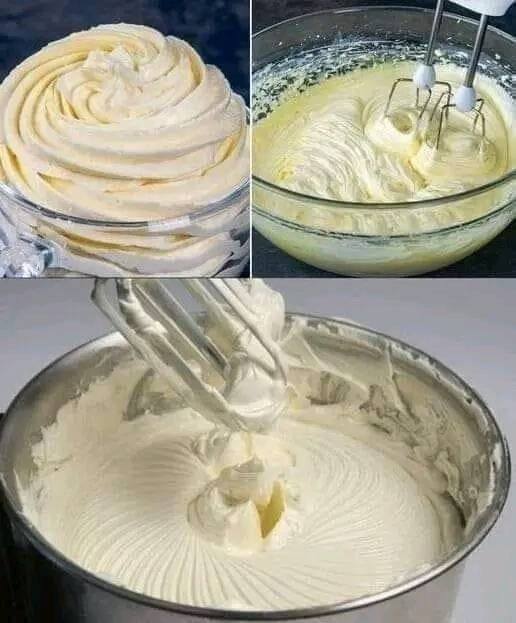ADVERTISEMENT
The Key to the Ideal Pastry Cream: A Guide to Perfecting This Essential Dessert Filling
Pastry cream, or crème pâtissière, is one of the cornerstones of French pastry. It’s rich, velvety, and versatile, used in a variety of desserts such as eclairs, tarts, cream puffs, and Napoleon cakes. But what makes the ideal pastry cream so special? It’s the perfect balance of flavor, texture, and consistency that elevates any dessert.
Making pastry cream can seem intimidating at first, but with the right technique and tips, it’s a manageable and rewarding task. If you’re ready to learn the secret to the perfect pastry cream, we’ve got you covered with a step-by-step guide and essential tips to ensure it’s smooth, thick, and flavorful every time.
What is Pastry Cream?
Pastry cream is a rich custard made with milk, sugar, egg yolks, butter, and a thickening agent like cornstarch or flour. The ingredients are cooked together until they thicken into a smooth, velvety texture. Pastry cream is often flavored with vanilla but can also be customized with other flavors such as chocolate, coffee, or fruit.
It’s the go-to filling for many classic pastries and provides that luscious, creamy bite that’s a hallmark of some of the best desserts. But, as with all custards, achieving the perfect consistency and flavor is key.
Ingredients for the Perfect Pastry Cream:
- 2 cups whole milk
- 1/2 cup granulated sugar
- 5 large egg yolks (note: save the egg whites for another recipe)
- 2 tbsp cornstarch (or 1 tbsp flour for a slightly different texture)
- 1 tbsp unsalted butter
- 1 tsp vanilla extract (or a vanilla bean, if preferred)
- Pinch of salt
Step-by-Step Instructions:
1. Warm the Milk:
Start by placing the milk and half of the sugar (about 1/4 cup) in a saucepan over medium heat. Stir occasionally until the mixture is hot but not boiling—just when it starts to steam and small bubbles form around the edges. Do not allow it to boil, as this could affect the texture of your pastry cream.
2. Mix the Egg Yolks and Sugar:
In a separate bowl, whisk together the egg yolks, remaining sugar, and a pinch of salt until smooth and pale. This helps dissolve the sugar and ensures a smooth custard. Next, add the cornstarch (or flour) and whisk until fully incorporated, forming a thick, smooth paste.
3. Temper the Egg Mixture:
The next step is crucial to avoid curdling the eggs. Gradually add a small amount of the hot milk to the egg mixture while whisking constantly. This process is called “tempering,” and it helps gently raise the temperature of the eggs without scrambling them. Once about half of the milk is incorporated, you can slowly pour the egg mixture back into the saucepan with the rest of the milk.
4. Cook the Pastry Cream:
Return the saucepan to medium heat. Continue to cook the mixture, whisking constantly to prevent lumps from forming. As the custard heats, it will start to thicken. Keep stirring until it thickens enough to coat the back of a spoon and holds its shape when you run your finger through it. This usually takes about 3-5 minutes.
5. Add Butter and Vanilla:
Once the pastry cream has thickened, remove it from the heat and stir in the butter and vanilla extract (or scraped vanilla bean). The butter will add a silky richness to the pastry cream, while the vanilla enhances the flavor. If you’re using a vanilla bean, scrape out the seeds and stir them in for an extra burst of natural vanilla flavor.
6. Cool and Strain (Optional):
To ensure your pastry cream is perfectly smooth, you can strain it through a fine-mesh sieve into a clean bowl. This removes any bits of cooked egg or lumps that may have formed. Once strained, cover the surface of the pastry cream with plastic wrap to prevent a skin from forming.
Allow the pastry cream to cool to room temperature, then refrigerate for at least 2 hours to fully set. It can be made a day ahead and kept in the fridge for up to 3 days.
Tips for the Ideal Pastry Cream:
- Use Full-Fat Milk: For a rich and creamy pastry cream, it’s essential to use whole milk. Skim or low-fat milk will result in a thinner and less indulgent texture.
- Don’t Skip the Tempering Step: Tempering the egg mixture is vital to prevent the eggs from scrambling when added to the hot milk. Always
